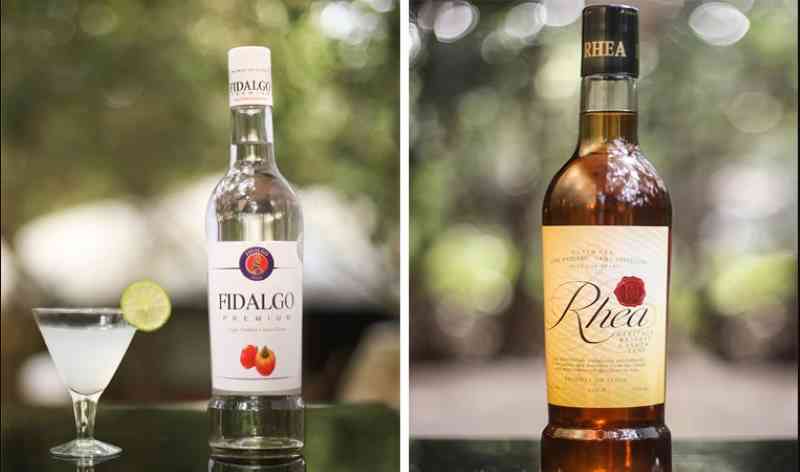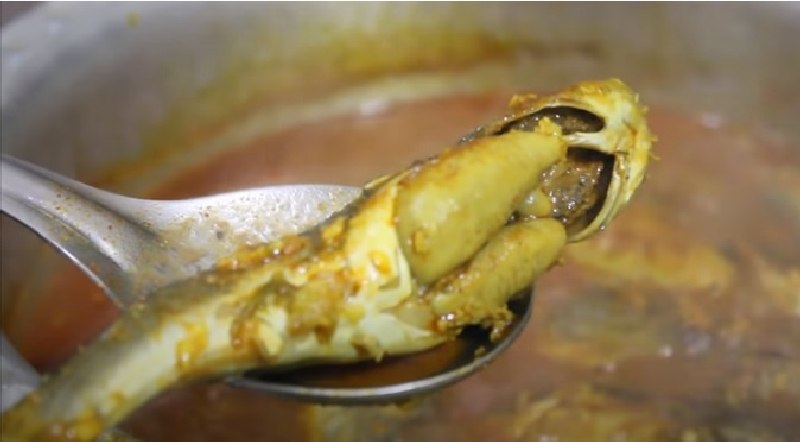Art & Culture
Kolkata Model Shamita Smita Ghosh Signs Contract For 3-Part Series With OTT Channel 3XRedHot

Kolkata: Model and actress Shamita Smita Ghosh Wednesday signed a contract with the Mumbai-based OTT channel 3XRedHot for a historical series based on the streaming platform.
The series which will be episodic in format and is expected to have about 200 episodes and 3 parts is produced by Vision Telefilms and directed by Maneesh Singh.
Actor Shamita Smita Ghosh who originally hails from Kolkata has done several web series and regional films in Bengali as well as Hindi.
The historical and mythological series “Tondaimandalam” will be shot in different parts of India. The series is based on the mythological elements of the origin of the locality, its inhabitants and its rulers.
Tondaimandalam is an area lying between Pennar river of Nellore and the Pennar river of Cuddalore and encompassed part of what is Madras today. Madras or Chennai is it is known today was a part of Tondaimandalam and was known as “Madraspatnam”.
The modern city of “Chennai” arose from the British settlement of Fort St. George and its subsequent expansion through merging numerous native villages and European settlements around Fort St. George into the city of Madras.
While most of the original city of Madras was built and settled by Europeans, the surrounding area which was later incorporated included the native temples of Thiruvanmiyur, Thiruvotriyur, Thiruvallikeni (Triplicane), Thirumayilai (Mylapore) which have existed for more than 1000 years.
Thiruvanmiyur, Thiruvotriyur and Thirumyilai are mentioned in the Thevarams of the Moovar (of the Nayanmars) while Thiruvallikeni in the Nalayira Divya Prabhandhams (of the Alwars).
The partly mythological and partly fictional series Tondaimandalam is based on tales of the 2nd and 3rd century AD.
The capital of the province was Kancheepuram. Tondaimandalam was ruled in the 2nd century by Tondaiman Ilam Tiraiyan, who was a representative of the Chola family at Kanchipuram.
It is believed that Ilam Tiraiyan must have subdued the Kurumbas, the original inhabitants of the region and established his rule over Tondaimandalam.
Art & Culture
MC Stan’s songs, music promoting sex, drug culture & usage among youth: Rayya Labib demands ban, censure

MUMBAI: Model and actor Rayya Labib, speaking to media persons in Mumbai on Monday claimed that rapper MC Stan’s songs and music are promoting sex and drug culture and usage in Mumbai.
She has demanded a ban or censure on the lyrics of some of the songs, saying that people like MC Stan are misusing the freedom given to artistes, singers and lyricists to write and compose objectionable music and lyrics to hike up their views and followers. Some of the songs are replete with abusive language, she said.
Rayya said she will be filing a formal complaint with the concerned authorities against the Bigg Boss 16 winner for the lyrics used in the songs which promote promiscuity and drug culture and usage among male youth.
“The message being sent out is that doing drugs is in fashion, using abusive language is the in thing and being unfaithful in relationships and leading a promiscuous lifestyle is glorified as a alfa masculine culture or bhai giri,” Rayya said in her media interaction in Mumbai.
Art & Culture
Profits or Quality? Is Goan Feni fast loosing it’s kick?

PANAJI: Feni lovers, experts, foreign tourists and aficionados visiting Goa this season – some of them after two years, are worried that their favourite Goan brew – Feni, doesn’t seem to taste, feel and hit like it did, say a decade earlier.
Year after year, quality and standards have been declining and as Samson Gardner, a British tourist who has been visiting Goa regularly for the last two decades (except during the Covid lockdown period) puts it – the Feni in Goa just isn’t the same, even though he opens the sealed bottle in front of his own eyes at every restaurant he visits.
Goa’s heritage brew, Feni, which has a GI or Geographical Indicator, has not only become dearer for the average Goan and foreign tourist alike, it seems to have lost its unique zing, with manufacturers and bottlers putting profits before quality.
Over the last two Feni producing seasons, its cost has risen from Rs 4,000 per can (35 litres) to Rs 7,000 to 8,000, more than double, claims a well-known brand owner. As a result, some unscrupulous elements have started diluting the brew at source, or mixing artificial flavours or flavouring agents along with water to double the quantity, even before it reaches the bottlers and packers.
While the non-Goan, non-regular Feni drinker wouldn’t know the difference and definitely not the hordes of domestic tourists who flock to Goa during the New Year festive season, Feni lovers and experts can easily spot the counterfeit.
As early as last year, as prices began to rise, manufacturers and stakeholders expressed fear that miscreants may start making spurious and artificial versions of the popular drink using artificial ingredients, chemical flavouring and industrial alcohol.
Feni, the most popular local drink of the coastal state, along with Urrak, was notified as a state heritage drink by the Goa government in 2016. While Cashew Feni is more popular, Feni is also prepared from Coconut in the coastal state.
The Cashew Feni from Goa is also the country’s first indigenous liquor to obtain a Geographical Indication tag, a process which was initiated by local Goan manufacturers of the brew in 2009 to ensure that its traditional manufacturing process was not replicated in other parts of the country or diluted by mass manufacturing. But now, in spite of the GI, as manufacturing costs spiral, the guardians of the holy grail themselves have begun to succumb to deception and counterfeiting.
According to local manufacturers, an unprecedented drop in cashew production in Goa due to unseasonal rains last two seasons, has in turn affected the production of Cashew Feni.
“We were expecting the price of Cashew Feni may be hiked by 20 to 30 per cent. But to our surprise, it has almost doubled compared to last year. Now Feni producers are charging Rs 7,000 to 8,000 for a single can of 35 litres. This rate will remain constant till the next production is done,” Shailesh Naik, a retailer, was quoted by news agency IANS as saying, a few months earlier.
The increased rates fuelled fears of spurious versions of the traditional brew, which seem to have become a reality now. Feni otherwise is one of the cheapest alcoholic drinks in Goa.
‘Urrak’ is obtained from the single distillation process or first distillate, while once double distilled, the drink is referred to as Feni.
Urrak, a seasonal drink containing alcohol, is consumed with lime juice and is very popular in local bars and taverns. Feni is also blended with spices like clove, pepper, nutmeg and cinnamon to make another variation called ‘masala Feni’, though the original double distillate is most popular.
The main concern is not the escalated prices of Feni, but the fear among traditional manufacturers that some stakeholders might try to fill in the shortfall by making spurious or artificial versions of the drink and the trend would begin to spread across the coastal state, with tourists unable to tell the difference lapping up lab or machine-manufactured artificially flavoured and strengthened Feni, instead of the original, traditionally prepared drink.
The production of genuine Feni in the previous season was almost half of the last ten-year average, causing a huge shortfall in the demand and giving rise to counterfeiting, which has begun to spread.
Art & Culture
Ishika Borah to shoot for Hollywood photographer Lynn Baxter

MUMBAI: Indian glamour and erotica model Ishika Borah will shoot with Hollywood photographer Lynn Baxter for the Lynn Baxter Yearbook 2022, Ishika said on Sunday.
Meanwhile, Goan-origin, Hollywood film director Jazon Fernandez and photographer Lynn Baxter will collaborate on a fashion-glamour project for a Festival film. Speaking about the project on his recent visit to Goa during the International Film Festival of India (IFFI), Jazon claimed that remote parts of Goa’s villages could house a treasure trove of buried secrets including gold, silver and copper work and artifacts, some of which could date to the 10th or 12th centuries, which he wanted to explore and catalogue with the help of Baxter.
Fernandez who is associated with the Hollywood studio Apollonius Films and Lynn Baxter, both known internationally in their respective segments announced their association at IFFI in Goa.
Fernandez who is a vocal advocate of authentic, mythology-based cinema said he was inspired to work with Baxter primarily due to his voluminous creative energy and
Art & Culture
Asia Tattoo & Art Exhibition To Be Held In Goa In November 2022

PANAJI: The Asia Tattoo & Art Exhibition & Conference (ATAE India) will be held in North Goa, India in November 2022 and will be a convention and exhibition for tattoo practitioners and enthusiasts, as well as anyone who wishes to see the world of tattooing up close.
With an emphasis on the 3-Ts: talent, technique and technology, the Asia Tattoo & Art Exhibition & Conference invites the public as well as members of the trade to come and experience the Tattoo Industry up close and personal.
With over 350 to 400 talented artists from across the globe under one roof in Goa, there isn’t a better place to be introduced to the niche and complex culture and technique of tattooing and body art.
With an estimated over two lakh footfalls expected over three days, this celebration of creativity and art promotes the skills of world-renowned artists in Asia and around the world.
“This event will be the biggest Tattoo Art Exhibition, Conference and Awards Function in the entire Asia,” Melwin Fernandes, one of the organisers said.

Several national and international film celebrities including many from Bollywood as well as renowned film makers and other artists are expected to attend the event and participate in the Conference and Convention, which will be part of the event.
Even if you don’t feel like getting tattooed, there will be plenty to do to keep an art enthusiast busy as there will a Tattoo Festival – known as the Goa Tattoo Art Festival.
You can meet the industry’s most talented Tattoo Artists, research different tattoo genres, trends and techniques and make an appointment or even get inked on the spot!
As well as an incredible lineup of Tattoo Artists, Asian Tattoo & Art Exhibition & Conference is home to body piercing, tattoo related merchandise and a thrilling sideshow entertainment event as well as in-depth tattoo competitions.
According to the organisers, the Asia Tattoo & Art Exhibition & Conference is your chance to find out all about body art from the best in the business and all under the one roof at Goa.
There will also be an awards ceremony – the most sought after Asia Tattoo & Art Awards, 2022, which will honour the best talent in the world from the Tattoo industry.
In addition, everyday from 8 pm to 10.30 pm, there will be a Goan Music Festival, featuring local bands and musicians from Goa to showcase Goan and international genres of music.
Art & Culture
BLING OTT, LSWF to offer free online training courses in fashion design like sketching, merchandising and hand weaving

MUMBAI: Entertainment and edutainment OTT (Over The Top) app, BLING OTT is offering basic or beginner online courses and workshops in various aspects of fashion designing like sketching, merchandising, etc.
The free workshops are organized in association with an NGO Latifa Social & Welfare Foundation (LSWF) and 50 students can attend each online batch.
LSWF works with educating underprivileged children across the nation and has been in action since the last 5 years, including the two years of the Covid pandemic, wherein it provided nutritional meals to underprivileged students during the lockdown.
According to Saif Hungund who represents the NGO, so far about 435 underprivileged students have benefitted by the courses offered by LSWF in association with other entities like BLING OTT, which is an upcoming movies and edutainment platform.
The platform will also offer technical courses in theory of weaving of traditional fabrics of India like Khadi and Kunbi.
According to tradition, the Kunbi drape which originates in tribal regions of Maharashtra and Goa is known as dethli (knotted) due to the peculiar knot on the right shoulder which secures the pallu.
The folds of the sari skirt flare out on the right, instead of the usual left.
The Kunbi sari is worn at least a foot above the ankle to ensure mobility while working in the fields or even at home.
The garment is an identity marker of the Kunbi community, a Scheduled Tribe of Goa and Maharashtra.
The term “Kunbi” is derived from the Konkani words “kun” (people) and “bi” (seed). “Kunbi”, therefore, literally refers to people who sow or germinate seeds, which refers to the farming community.
Sometimes, stripes of white, green, purple and indigo were added near the pallu. A 2.5 to three-inch wide dobby border in streams of white or gold ran along the sides of these saris.
Unfortunately, today most Kunbi fabric is produced on power looms in Maharashtra, Belgaum and Karnataka and masquerades as “original or traditional Kunbi” and is worn by dancers and performers in Maharashtra and Goa during festivals and events.
Bollywood fashion designer C’Raj of Mumbai will also be part of the online training workshops and share his knowledge and expertise with the students, said Anita Shah, a spokesperson for the project.
“I am collaborating with BLING OTT and LSWF to train fashion design students to hand weave these traditional fabrics and keep alive an otherwise long-lost traditional art,” said designer C’ Raj, who has agreed to work with underprivileged students in this project.
Art & Culture
Digital Deejay’s Goa’s Top 100 to profile Goan Nightlife, Food and More In a Multimedia Format

PANAJI: Digital Marketing & Networking Co., Digital Deejay – which curates art, music, food, travel and lifestyle products and services all over India, is set to present a curated vivid collection of Goa’s Top 100 Nightlife and Food Places, including restaurants, clubs, pubs, restobars, etc., not to forget Goa’s famed seaside shacks.
As the title sums it all Goa’s Top 100 – Nightlife, Food and More, the collection will list out the best of the best on the Goan horizon, including food, hospitality and entertainment services like Goa’s famed casinos.
A comprehensive collection of the best of Goa’s food and nightlife places is on the cards. We are independently reviewing the venues and locations and the work which started in January 2022 is almost complete, said Sheila Noronha, Marketing Manager of Digital Deejay.
“We are reviewing and grading restaurants, pubs, restobars, clubs, shacks and other eating and nightlife places in Goa. We have a team of 30 volunteer journalists or citizen journalists who are doing the reviews. Most of our team members are professional journalists, authors and reviewers working with mainline publications/Tv channels in India, for whom food, lifestyle and hospitality are a private passion, besides their professional job responsibilities,” said one of the reviewers, who had contributed to the first edition of the Times Good Food Guide in the late 1990s.
The collection titled Goa’s Top 100 – Nightlife Food Places and More will be released in a multimedia format online (as well as in a hard copy format), featuring video walkthroughs, later this year.
Art & Culture
Meet Malad-based Sonya Kaur, Mumbai’s very own celebrity home-chef who can cook traditional dishes from 12 States

MALAD, MUMBAI: What do you do when you are living alone, working with an MNC with a big pay packet and suddenly feel like having home-cooked gourmet food with a dash of authentic tradition, just the way your mum or grandmother made it?
Well for those who live in the Malad, Orlem, Malwani and Charkop area in the western suburbs of Mumbai, they pick up the phone and dial Sonya Kaur – Mumbai’s very own home celebrity chef who is as famous in Mumbai’s mini Goa – Orlem, for her Goan crab xacuti, as she is for her Punjabi rajma chawal or other Marwadi and Gujarati exclusive delicacies in parts of the Gujarati-dominated sectors of suburban Mumbai.
Now, you may wonder who or what a home celebrity chef is? For starters Sonya Kaur can cook authentic traditional dishes from different states, and whether it is Goan crab xacuti or authentic Punjab da baingan bharta, she does justice to both. She is also famous for her Kerala prawn sukka as she is known for her Thai Veg Red and Green Curries.
Asked to describe herself, Sonya says, she is a Punjabi who loves sea-food, particularly Goan food and wants to experiment with fusion preparations that merge cultures and traditions. All the same, she also swears by authentic, undiluted cuisines and traditional food.
32-year-old Sonya Kaur, a single mother of two young girls, took up professional cooking as a chef due to certain personal family constraints, which forced her to enter a business or work to make ends meet.
And very soon, she was much sought after in the Malad, Malwani, Charkop and Orlem areas of Mumbai’s western suburbs, with her fame spreading to even the mainline parts of the Island city. Earlier, prior to trying out her culinary skills, she had worked in the corporate world, but had to give it up as her daughters were very young and she was required at home.
Today, after almost 3 years of running her professional cook-to-order home biz, she wants to expand and reach out to more and more individuals and families who would like to try out her fusion cuisines as well as authentic traditional Goan, Punjabi, Malwan and other South and North-Indian dishes.
Unfortunately, a small food stall that she set up on an experimental basis in Malad’s Bhoomi Park area was torn down by the Municipal authorities, forcing her to work from home, catering to takeaway orders as well as other bulk or party food biz.
The going is tough, she says, adding that setting up a food business in Mumbai is very investment heavy and individual gourmet chefs and traditional cooks alike, cannot start up even a small business in Mumbai to keep their own kitchen fires burning, unless they are able to invest several lakh, which is not possible for everyone.
Art & Culture
Goa Heritage & Culture Forum to offer training courses in traditional Kunbi fabric weaving

PANAJI: The Goa Heritage & Culture Forum (GHCF) will train Goan village as well as tribal women in the coastal state in Kunbi weaving techniques to promote the traditional weave, GHCF convener Flynn Remedios said today.
“In order to keep the tradition alive, we are conducting training programmes of varying duration – from basic to advanced level. All the products and substances used in the production of this Kunbi fabric will be 100 percent organic and authentic, using age-old traditional methods of weaving and not what is being presently dished out in the name of Kunbi,” Remedios said, adding that what is currently passed off as Kunbi weave is not the original weave traditionally used by the Kunbi community since centuries.
The original Kunbi sari is 4.5 metres long and is woven using bright earthy organic plant-based dyes and colours to signify vitality and fertility.
Expert weavers with years of experience can do about two saris per day, but there are hardly any such experts left and the art of Kunbi fabric weaving is an almost forgotten tradition.
The pinkish red plant dye and other dyes used for the fabric will be produced naturally in Goa with natural ingredients such as iron oxide and rice water.
The traditional Kunbi sari was worn by the Goan (and in some parts of Maharashtra) Kunbi tribal women before the advent of the Portuguese in the 16th century. It was a cotton-chequered red-and-white sari with a sturdy weave. Worn short, a little above the ankles with a knot over the shoulder, it was well-suited for working on farmlands and in hot humid weather.
According to tradition, the Kunbi drape is known as dethli (knotted) due to the peculiar knot on the right shoulder which secures the pallu. The folds of the sari skirt flare out on the right, instead of the usual left. The sari is worn at least a foot above the ankle to ensure mobility while working in the fields or even at home.
The garment is an identity marker of the Kunbi community, a Scheduled Tribe of Goa. The term “Kunbi” is derived from the Konkani words “kun” (people) and “bi” (seed). “Kunbi”, therefore, literally refers to people who sow or germinate seeds.
Sometimes, stripes of white, green, purple and indigo were added near the pallu. A 2.5 to three-inch wide dobby border in streams of white or gold ran along the sides of these saris.
Today most Kunbi fabric is produced on power looms in Maharashtra, Belgaum and Karnataka and sold as “original Kunbi” to be worn by dancers and performers in Goa during festivals and events.
According to Remedios it takes about 2 days to weave a single Kunbi sari for a student, and new students take a minimum of one month to learn the basic art of weaving. Further expertise is picked up by practice over months, he says.
The GHCF is offering a two-month hands-on course in Kunbi fabric weaving to promote the craft. There is a one month training programme for those who wish to acquire basic knowledge of the art, without much practical experience of weaving. Training for tribal and village women will be provided free of cost.















































